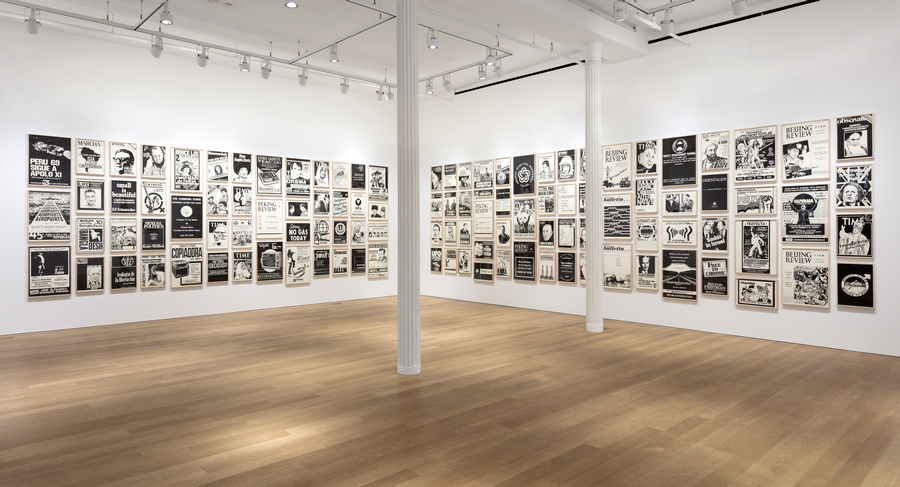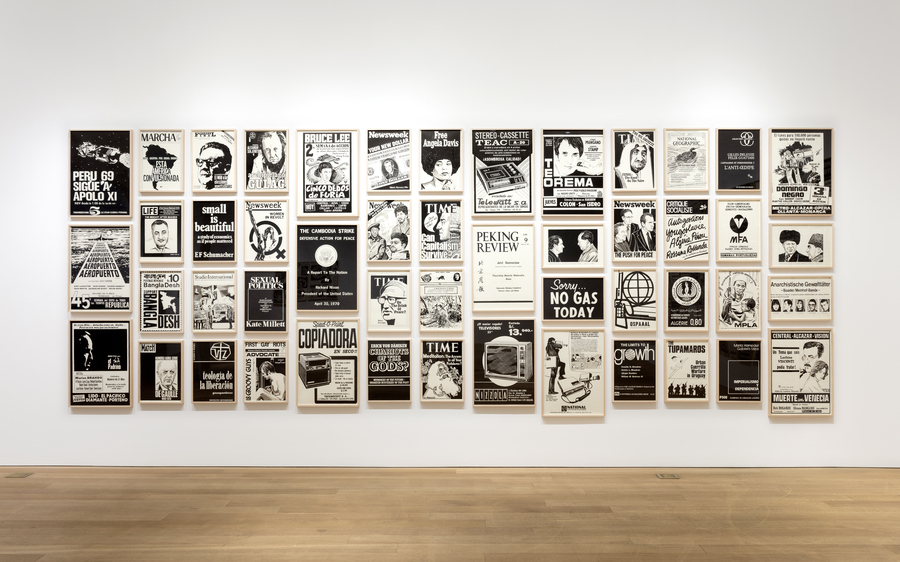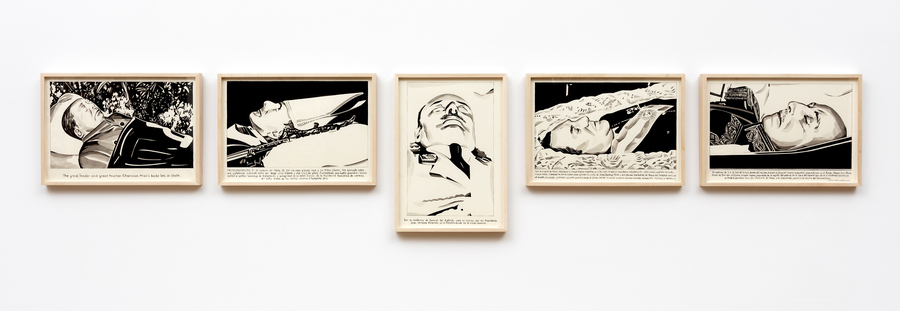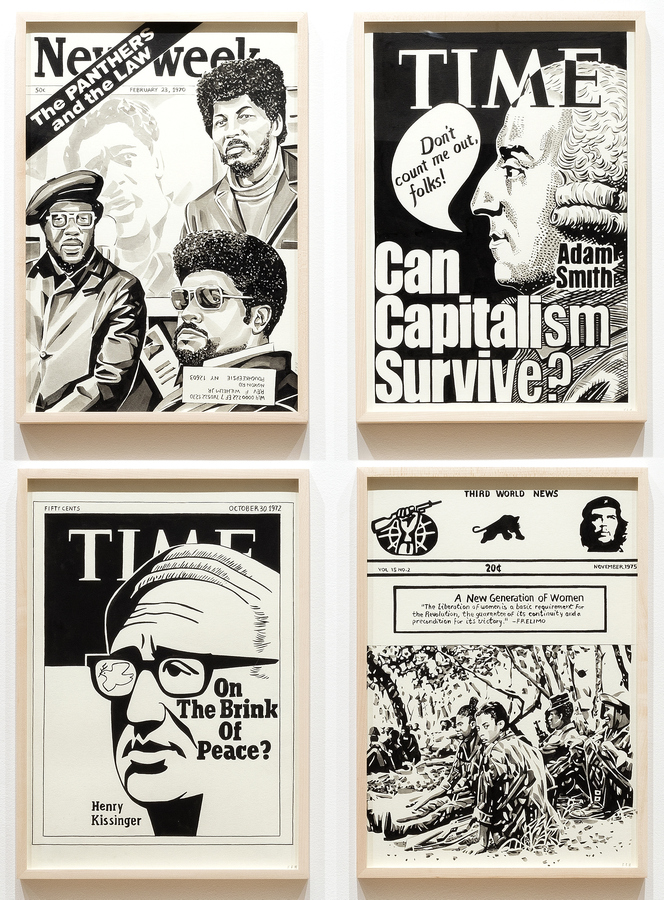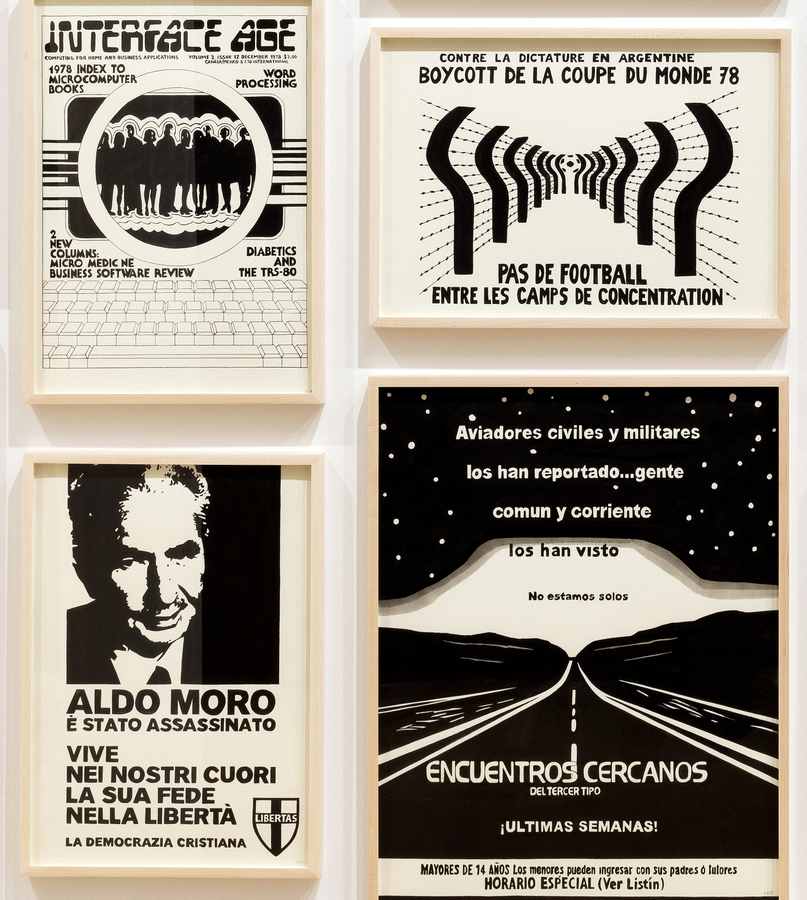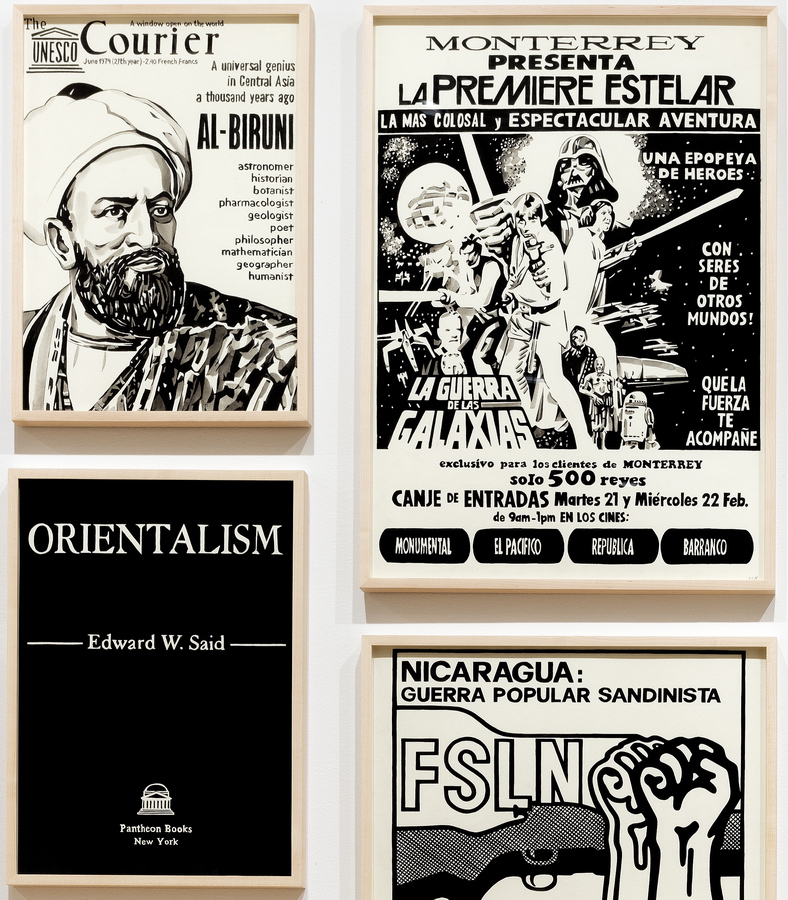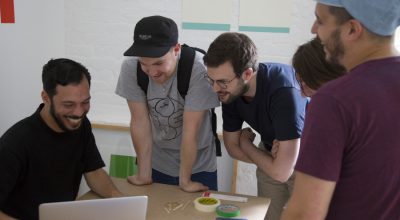
Fernando Bryce:the Decade Review
By Jorge Villacorta
Looking back on the seventies, Fernando Bryce displays some very perceptive insights into war and peace in the Cold War period; the liberation movements; the radical thinking; the intellectual pursuit in the wake of structuralism; the growth of the technological animus; and the upsurge of spectacle. His choice of images presented as a both literally and figuratively, compressed visual history of those years confronts the viewer with the obvious and the memorable (as in the Star Wars poster), and also with otherwise unknown or forgotten, unseen or underappreciated achievements, foibles, failures, fun, excesses, tragedies and hopes of the nineteen seventies.
The series is most certainly not just a time-capsule. With a new emphasis on the persistently different political angle (The Peking Review’s scrutiny of world politics), and the raw energy of revolution (always with a nationalistic inflection) as experienced in Central and South America, Africa and Asia, the outcome is the unexpected and unpredictable revision of the past and the comparison with the present we live in. The birth of new countries -Bangladesh, for instance-, accompanied by the upheavals and uprisings at the start of long processes of transformation of old societies founded on discrimination and oppression –Nicaragua under Somoza, or the South Africa of apartheid-, are regarded by the artist as only apparently disparate elements that can be harnessed in a pertinent and eloquent call to construct memory. It is his particular commitment.
In Bryce’s review of the decade what is implicit is that world diplomacy was a game played expertly, and exclusively, in the Northern Hemisphere, while the South was dealt and tampered with, most frequently without any political etiquette. Thus one can surmise that the seeds of what we now know as de-colonial thinking were being sown simultaneously in the minds of individuals, all over the globe, living in precarious and unstable locations where a multiplicity of experiences and experiments in the form of nascent post-imperialistic democracies or, more often than not, dictatorial regimes.
Magical thinking surrounding the machine world became more evident as man-made gadgets and devices and electronic processing units multiplied and were enhanced. Computers started being used to monitor and control artificially created environments, while the ecological movement, ‘the small is beautiful’ ethos and the protection of wildlife intensified in exactly the opposite direction at the time. Interestingly enough, as can be judged from the cultural horizon supported by the series, the seventies cannot be simply dismissed as the Me Decade. It is clear that with the organization of movements to redress fractures in society by fighting discrimination and upholding the rights of the individual, a new state of affairs began in the post-industrial societies. Women’s Liberation and Gay Liberation were crucial in this respect, both as social movements and, for the first time, as political forces. ‘The personal is the political’ comes to mind as the fight for the rights of women over their own bodies defied both the Churches and the State.
The end of the Vietnam War and the efforts for peace in the Middle East (i.e. Camp David) are neither magnified nor criticized in Bryce’s work. At some points in history, morally messy endings can entail new departures and opportunities; or vice versa. History is in no manner a runaway train. The Decade Review is a reminder that we need to reassess our image of the World. The future is always at stake and we shouldn’t just go through the motions.
Fernando Bryce’s The Decade Review is on view at Alexander and Bonin, 47 Walker St, New York, NY, until October 26, 2019.
También te puede interesar
ECOLOGIES OF CARE
"Ecologies of Care" showcases a series of new works created during Ani Liu’s postpartum period, in contemplation of the labor of mothering. Reflecting the material culture of infant and childcare, the works shown are...
Ishmael Randall Weeks:constructive Resistance
Steve Turner presenta Constructive Resistance, una exposición individual del artista residenciado en Lima, Ishmael Randall Weeks. Explorando los legados del modernismo y el Arte Povera, Randall Weeks utiliza la arquitectura como una estructura metafórica...
Residencies in London And New York Supported by The Caribbean Art Initiative
The Caribbean Art Initiative collaborates actively and on the long-term with cultural institutions and not-for-profit organizations that exhibit and support artists inside the Caribbean region, as well as with organizations outside the region that...

